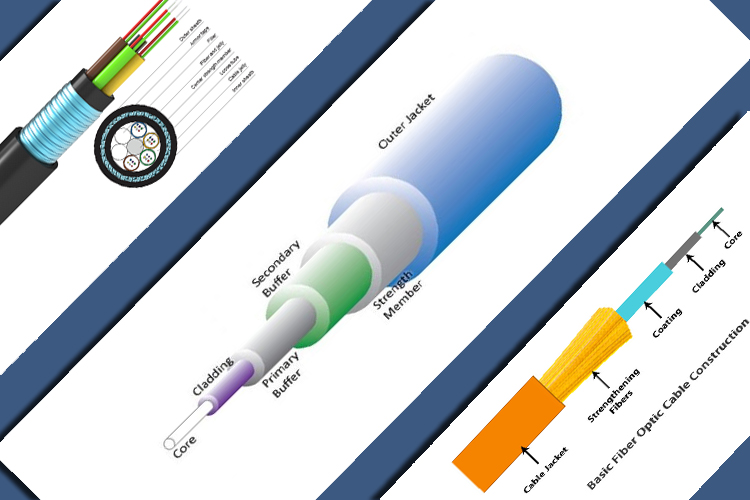By goodvin | 23 August 2023 | 2 Comments
Understanding the Components of a Fiber Optic Cable for Reliable Data Transmission
Understanding the Components of a Fiber Optic Cable for Reliable Data Transmission
Fiber optic cables are the backbone of modern communication systems, enabling high-speed data transmission over long distances. A typical fiber optic cable is made up of several components, each with a specific function to ensure reliable data transmission. In this article, we will explore the different components of a fiber optic cable and their importance.

Optical Fiber
The optical fiber strand is the basic element of a fiber optic cable. It is made of glass or plastic and is responsible for transmitting light signals over long distances. All fiber strands have at least three components to their cross sections: the core, the cladding, and the coating. The core is the central part of the fiber where light travels, and the cladding is a layer of material that surrounds the core and helps to keep the light inside. The coating is a protective layer that covers the cladding and provides additional mechanical protection.
There are two types of optical fibers - glass and plastic. Glass fibers are used for long-distance communication, while plastic fibers are typically used for short distances. Plastic optical fibers consist of a plastic core and a plastic cladding of a different index of refraction. However, they are lower quality and not suitable for long-distance transmission.
Buffer
The buffer is the component that provides additional protection for the optical fibers inside the cable. It is the second-most distinguishing characteristic of the cable after the optical fiber. The buffer does just what its name implies - it buffers or cushions the optical fiber from the stresses and forces of the outside world. Optical fiber buffers are classified as either tight or loose tube.
Tight tube buffers are made of hard plastic and are tightly wrapped around the optical fibers. They provide excellent protection against mechanical stress and moisture. Loose tube buffers, on the other hand, are made of soft plastic and are loosely wrapped around the optical fibers. They are more flexible and can withstand extreme temperatures.
Strength Members
Strength members are components that provide additional mechanical strength to the cable. They are typically made of materials such as Kevlar or fiberglass and are placed around the buffer to protect the optical fibers from tension and compression. Strength members are essential for ensuring that the cable can withstand the stresses of installation and operation.
Optical Shield Materials
Optical shield materials are used for mechanical protection of the cable. They are typically made of materials such as aluminum or steel and are placed around the strength members to provide additional protection against moisture, rodents, and other external factors.
Outer Jacket
The outer jacket is the final layer of the fiber optic cable. It is made of a durable material such as polyethylene or PVC and provides additional mechanical protection to the cable. The outer jacket also helps to protect the cable from UV radiation and other environmental factors.
In conclusion, fiber optic cables are complex systems that require careful design and construction to ensure reliable data transmission. Each component of the cable, from the optical fiber to the outer jacket, plays a critical role in ensuring that the cable can withstand the stresses of installation and operation. Understanding the different components of a fiber optic cable can help you choose the right cable for your specific application and ensure that your data transmission is reliable and secure.
Recommended Reading:In the era of 5G and industrial Internet, how will the bandwidth demand for optical fiber cable change?
Recently Reviews
Read MoreLeave a Reply
Your email address will not be published.Required fields are marked. *
POPULAR BLOG
- Will SDM Technology Become the Only Way for High-Capacity Optical Transmission?
- Fiber Optic Network Development Strategy and Technical Roadmap
- Impact of Technical Innovation of Optical WDM on the Future of Optical Communication
- ATB Subscriber Terminal Box: Enhancing Connectivity in Telecommunication Networks
- Comparison and Analysis of CWDM and DWDM in Multi-view